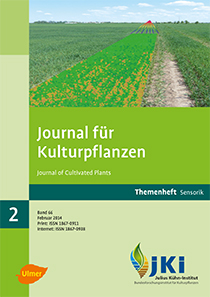Sensors for nitrogen fertilization – experiences of 12 years practical use
Keywords:
Site-specific fertilizer application, sensor-controlled nitrogen application, yield potentialAbstract
Sensor-controlled nitrogen application opened the ability to optimize yield and protein content of cereals. Sensors are measuring chlorophyll and biomass status in the field and use site-specific N fertilization for different yield potentials in the subfields. All presented sensor systems are of great value. They all detect the naturally existing heterogeneity in plant growth. Real-time systems collect data at each pass of the field. Every online system is performing measurements, doze calculation and fertilizer application at one time. Also an offline approach overlaying sensor data with additional information of the field (e.g. soil maps, yield potential or field capacity) has a great potential for further optimization in the future. Many interesting field trials on this subject are running at several research institutions (ATB-Potsdam, FH-Kiel, Hanse-Agro, AgriCon).
The benefits of site-specific fertilizer application depend on the production intensity and the phenology of the specific year. Effects vary from N-saving up to increased yield and quality of sub sites or the whole field. These effects could be demonstrated with the YARA N-Sensor, which is shown in a variety of publications of various institutions in recent years.
Additional use of the technology e.g. the application of growth regulators or plant protection improve the efficiency per working per day and season. Estimated 700 sensor systems are used in Germany for fertilization, this clearly shows the functionality and operational stage of the technology.
The practice has shown that sensors are working well, and even without big data management N fertilization can be optimized with simple control variables, reducing N-excesses and that optimizes the yield.
DOI: 10.5073/JfK.2014.02.02, https://doi.org/10.5073/JfK.2014.02.02








